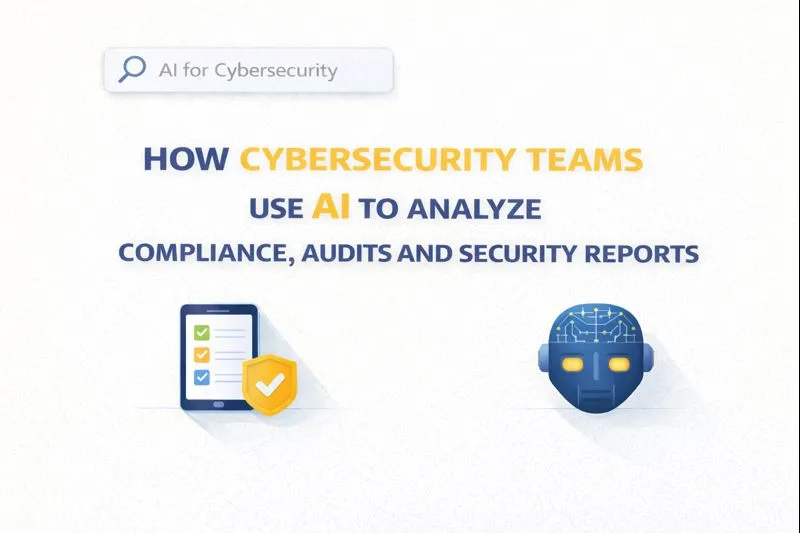The Blind Spots in Cybersecurity Audits You Must Know

Cybersecurity is one of the most important considerations for all businesses nowadays. Due to the ever-increasing digitalization and reliance on the internet, many aspects of a business are at risk.
While standard security measures are taken by most people and companies, there are a ton of blind spots that they miss. That’s why security audits are a necessity.
Yet many audits only scratch the surface and focus on compliance checklists rather than uncovering hidden vulnerabilities. In this article, we are going to look at some of the blind spots in audits that you should address to improve your organization's security.
Shadow IT and Unauthorized Applications
Shadow IT refers to unauthorized apps and services used by employees without the approval of the IT department. For a proper security posture, nothing should be installed on a company device without the IT department’s knowledge.
However, many employees connect their personal apps, cloud storage, or messaging platforms without approval. They do it not out of maliciousness, but due to ignorance and convenience.
In traditional audits, shadow IT is ignored because it's not part of the compliance checklist. So, checking for it is necessary, and measures need to be taken to prevent it in the future.
To prevent shadow IT, strict access controls should be implemented, and network monitoring tools like DNS gateways should be used to avoid unauthorized applications from communicating over your network.
Inactive or Orphaned Accounts
Another thing that can get overlooked in security audits is orphaned accounts. An orphaned account is an inactive account that no longer has a user.
Typically, the accounts of employees who have left your organization make up the brunt of the orphans. These accounts are great targets for attackers for the following reasons.
Valid credentials. Orphan accounts still work, giving attackers “legitimate” access.
Retained privileges. Orphan accounts often have elevated rights left behind by former employees or systems.
Low visibility. Inactive accounts are rarely monitored, so suspicious activity goes unnoticed.
Expanded attack surface. Every unused account is another potential entry point.
Stealth and persistence. Attackers can use them for long-term, hidden access.
These accounts can be hacked in a variety of ways. For example, they can be brute forced because the credentials remain unchanged. They can be accessed via lateral movement (i.e., a less critical system was compromised, and attackers used it to get access to the orphan system). They can also be exploited due to poor off-boarding processes.
So, it's possible ex-employees still have credentials that work and can be used to access the company systems.
So, auditors need to be looking for such accounts and revoking their access rights as well as deleting them so that they can’t be used.
Open Ports and Misconfigured Services
Networks are the most scrutinized component in a security audit. After all, insecure networks are the biggest attack vector for all cybercrimes. A common blind spot in network audits is network configurations, specifically open ports. An open port will accept any traffic that it thinks is meant for it without authorization.
Open ports in a network are commonly missed during audits because they are often necessary for specific services to function. However, organizations often leave unused open ports, as they are due to either not knowing about them or not understanding them.
Anyone can scan a network for open ports if they know the network's public IP address. Attackers often scan for them to find an easy way to infiltrate a network.
The solution is to use an open port checker on your network to find unnecessary ports and close them before they can be exploited.
Third-Party and Vendor Risks
Another problem in security audits is that they are limited to internal systems and practices. They don’t check your partners and vendors' systems.
This is bad because if your business uses resources or communicates with 3rd party vendors or other business partners, it can be at risk of attack if those systems are compromised.
The solution to this conundrum is to include vendor risk assessments and demand evidence of compliance with security standards in your contracts with 3rd parties.
Endpoint Devices and BYOD Policies
Some of the common points of infiltration in networks are endpoint devices like smartphones, IoT devices, and even laptops. Bring Your Own Device (BYOD) policies exacerbate these issues further because it is impractical to make all the devices comply with security practices and SOPs.
BYOD policies also enable shadow IT, and that is, of course, another problem.
The solution is to avoid BYOD policies and provide company devices to your employees. Or, you can invest in a solid IT department that can apply mobile device management (MDM) tools to include mobile endpoint devices and personal laptops/smartphones in the audits.
Cloud Configurations
Many businesses use SaaS software through the cloud nowadays. However, this increased cloud adoption comes with its own risks. Issues like:
Excessive permissions
Weak identity policies
Misconfigured storage buckets
These are major blind spots because standard audits will not identify these, as they are not issues in isolation.
To deal with this, conduct regular cloud security reviews, including automated scans for misconfigurations.
Human Factors and Social Engineering
No matter how good your security posture is, the human factor can always undermine it. Phishing attacks, social engineering, and other methods of the same ilk can bypass all security measures. Audits can’t pick these up because how can you audit a human being?
To solve this, you need to provide cybersecurity training to your employees and educate them on social engineering tactics. The audit can test the effectiveness of this training by making employees go through security scenarios and testing their responses..
Incident Response Readiness
Audits can check whether policies exist or not, but they can’t check how effective they are in practice. Many organizations discover too late that their incident response plan is outdated or untested.
To solve this, you should hold exercises to test your incident response plan. This can include controlled simulations or tabletop exercises. The experience will highlight whether your incident response protocols are effective or not.
Conclusion
Cybersecurity audits provide value, but they’re not foolproof. Blind spots such as shadow IT, open ports, and vendor risks can undermine an otherwise strong security posture.
By expanding the scope of your audits and leveraging tools smartly, you can close these gaps and create a more resilient security framework.
Staying secure isn’t just about passing audits; it’s about proactively addressing what the audits might miss.




